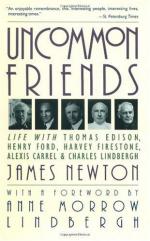|
This section contains 378 words (approx. 2 pages at 300 words per page) |
Encyclopedia of World Biography on Alexis Carrel
The French-American surgeon and Nobel Prize winner Alexis Carrel (1873-1944) developed surgical techniques that marked the beginning of modern work in transplanting organs.
Alexis Carrel was born in Sainte-Foy-les-Lyon, France, on June 28, 1873. He graduated from the University of Lyons with a bachelor of letters degree in 1889, followed the next year by a bachelor of science degree; and, in 1900, by a medical degree. He taught anatomy and operative surgery at Lyons, beginning experimental research there. Carrel's particular interest in vascular surgery, however, met with little approval at Lyons. In 1904 he migrated to Canada and a year later to Chicago, where he was associated with the Hull Physiology Laboratory.
In 1906 Carrel joined the new Rockefeller Institute for Medical Research in New York. He became a fellow of the institute in 1909, a member in 1912, and member emeritus in 1939. Here he did research in vascular surgery, directing attention to organ transplantation and vascular suture. He recognized that the replacement or transplantation of organs was possible only if circulation without hemorrhage or thrombosis could be reestablished in the organ. For the successful techniques he developed in vascular anastomosis, Carrel was awarded the Nobel Prize in 1912.
In 1913 Carrel married Anna de la Motte. During World War I he served in the French Army Medical Corps and, with the chemist Henry Drysdale Dakin, developed sodium hypochlorite for the sterilization of deep wounds.
After the war he returned to the Rockefeller Institute. In 1935 Carrel and Charles A. Lindbergh, the aviator, announced methods by which the heart and other organs of an animal could be kept alive in glass chambers supplied by a circulation of artificial blood. In 1938 they published The Culture of Organs.
Carrel's most popular book, Man the Unknown (1935), deals with a range of scientific concepts and argues that man is in a position to control his destiny and reach perfection through eugenics, or selective reproduction. During World War II he was accused of Nazi sympathy because of these ideas.
Upon retirement in 1939 from the Rockefeller Institute, Carrel went to France. In 1940 he returned to the United States on a special mission to study man and the environment. At the time of his death in Paris on Nov. 5, 1944, he was director of the Vichy government's Carrel Foundation for the Study of Human Problems.
|
This section contains 378 words (approx. 2 pages at 300 words per page) |


